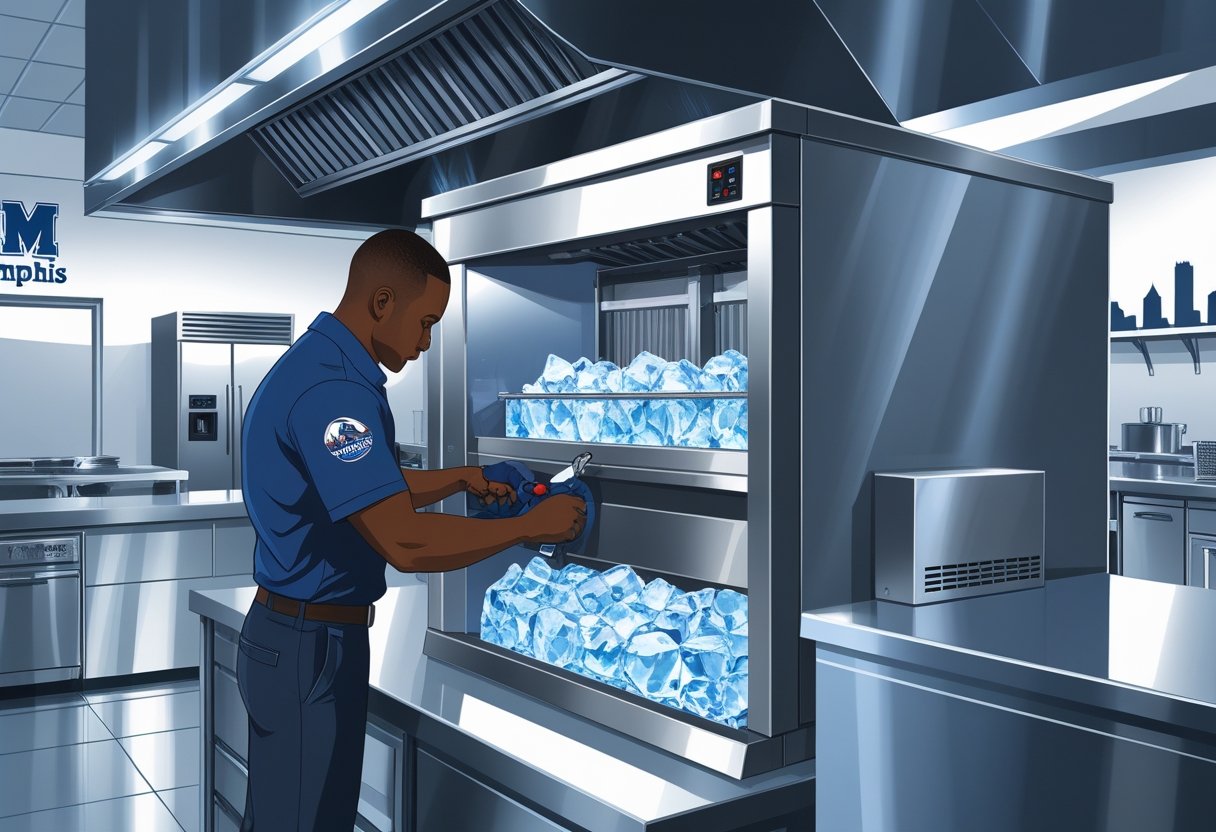proudly serving
the mid-south
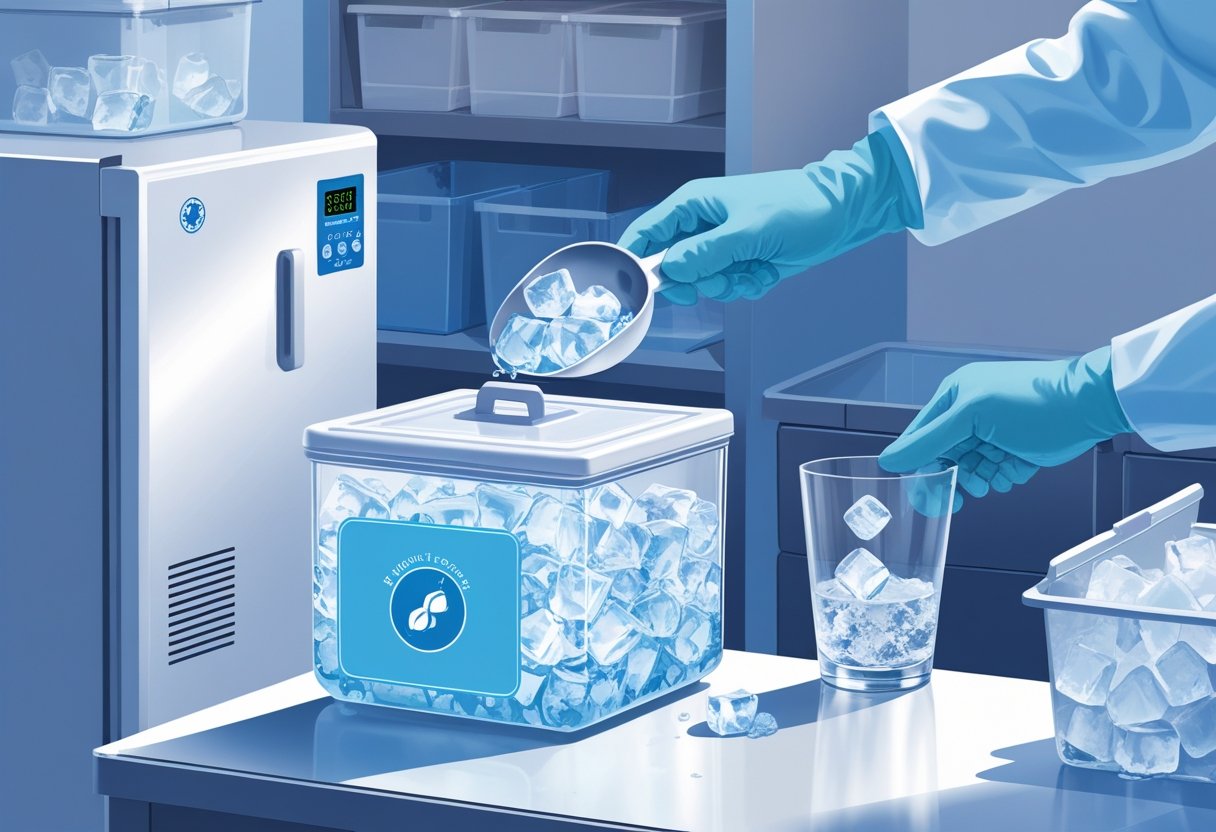
Best Practices for Storing Ice to Maintain Purity and Extend Shelf Life
Proper ice storage is essential whether you run a busy restaurant, manage a hospital, or just want to keep your drinks chilled without constant melting. The best way to store ice is to keep it in clean, airtight containers within a consistently cold freezer set below 0°F to prevent contamination and slow melting. This simple step protects the ice’s quality and ensures it stays safe for use.
Understanding how to handle and store ice properly can save you money and maintain your operation’s efficiency. At Memphis Ice, we’ve seen how the right storage habits extend the life of ice and reduce waste. Taking a few practical precautions can make ice maintenance one less thing you need to worry about, giving you more time to focus on your business.
Fundamental Principles of Ice Storage
Effective ice storage depends on controlling environmental factors and understanding the specific characteristics of the ice you use. Maintaining ice quality means preventing contamination, minimizing melting, and matching storage methods to the type of ice. These fundamentals help extend shelf life and ensure consistent performance.
Why Proper Ice Storage Matters
Proper ice storage preserves quality and safety. When ice melts and refreezes, it can clump, lose clarity, and develop off-flavors that affect taste and appearance. Contaminated ice risks food safety and customer health, especially in food service or healthcare settings.
Storing ice correctly reduces waste by preventing premature melting, saving money on frequent replenishment. For commercial users, like those relying on a Memphis Ice commercial ice machine, consistent ice quality is essential to meet high-demand periods without service interruptions.
Following best storage practices minimizes maintenance issues from melted water pooling around machines or in walk-in coolers, reducing slips, corrosion, and operational downtime.
Factors That Affect Ice Quality
Ice quality depends on several key factors:
- Temperature: Keep ice stored at 0°F (-18°C) or below to prevent partial melting.
- Airflow: Avoid excess airflow inside storage to reduce sublimation and freezer burn.
- Humidity: Excess moisture can accelerate clumping and contamination.
- Cleanliness: Use clean containers and avoid cross-contact with food or odors.
Storage containers should be airtight or sealed tightly to keep ice free from freezer odors. Regular cleaning of storage areas, including ice machines and walk-in coolers, supports ice quality by preventing microbial contamination.
Memphis Ice recommends routinely inspecting ice storage for cracks or moisture build-up. Proper freezer temperature combined with hygienic handling keeps ice crisp and safe.
Types of Ice and Their Storage Needs
Different types of ice require tailored storage approaches:
| Ice Type | Storage Tips | Notes |
|---|---|---|
| Cubed Ice | Store in airtight containers to avoid clumping | Common for bars, food prep, and healthcare |
| Flake Ice | Keep packed tightly and covered | Used for seafood displays and medical transport |
| Nugget Ice | Store loosely to maintain shape | Popular in fountain drinks and cold therapy |
| Dry Ice | Store in insulated, ventilated containers | Avoid airtight sealing due to CO2 gas release |
Ice quality varies by type; for example, flake ice melts faster and requires faster turnover. Dry ice needs specific handling to prevent frostbite and safe ventilation to disperse carbon dioxide gas safely.
Your ice storage strategy should align with the ice type you use to optimize longevity and safety. Memphis Ice’s experts can help you select the right storage solutions based on your ice machine and application needs.
For more detailed advice on maintaining ice quality over time, check out best practices from industry specialists.
Selecting Appropriate Ice Storage Containers
Choosing the right container for storing ice impacts its quality, safety, and longevity. You need materials that won’t contaminate the ice, airtight seals to prevent melting and odor absorption, and insulation that maintains cold temperatures for extended periods.
Choosing Food-Grade Materials
Always select ice storage containers made from food-grade materials. These are specifically designed to avoid chemical leaching or contamination that could affect your ice’s purity. Common food-safe plastics include polyethylene and polypropylene, which are durable and resistant to cracking.
Avoid containers not intended for food storage as they might harbor harmful substances. Stainless steel is another good option due to its non-porous surface and ease of cleaning. This prevents mold buildup and supports hygiene standards important for commercial settings.
Food-grade containers ensure compliance with health safety regulations and protect your customers. For your ice machine setup, investing in these materials reduces the risk of contamination and maintains ice quality longer.
Benefits of Airtight Containers
Airtight containers are crucial for preserving ice quality. They minimize exposure to air, which slows melting and prevents the ice from absorbing odors from nearby foods. Proper seals also reduce moisture loss, helping the ice stay solid longer.
Look for containers with secure lids and gaskets that lock firmly in place. This feature also lowers the buildup of frost inside your freezer or ice storage unit. Using airtight containers protects your ice from contaminants and helps maintain consistent temperature control.
If you handle large volumes of ice, airtight containers can also simplify inventory management by keeping ice fresher between uses. They support sanitation guidelines you must follow in the food service or healthcare industries.
Utilizing Insulated Coolers
Insulated coolers are highly effective for storing ice, especially in commercial environments like bars or catering services. These coolers use thick, insulating materials such as expanded polystyrene (EPS) or polyurethane foam to maintain low temperatures and reduce melt rate.
When choosing an insulated cooler, look for those designed specifically for ice storage—these often have built-in drains for melted water and durable exteriors to withstand frequent use. The insulation keeps ice from warming too quickly, which is critical during transport or extended periods of use.
For businesses in the Mid-South, like those served by Memphis Ice, insulated coolers are a reliable choice to maintain ice supply during high-demand summer months. Their efficiency helps prevent downtime and ensures your ice machine delivers at peak performance.
Talk to a Memphis refrigeration expert today about the right insulated solution for your ice storage needs.
Maintaining Ice Quality and Preventing Freezer Burn
Keeping ice fresh and free from freezer burn depends on controlling exposure to odors, maintaining your freezer properly, and organizing ice with clear labeling. These actions preserve the ice’s purity, prevent contamination, and make managing your supply easier.
Reducing Odor Absorption
Ice easily absorbs odors from nearby foods or strong-smelling items. To preserve ice quality, always store ice in airtight containers or sealed plastic bags. Avoid placing uncovered ice near pungent foods like onions, garlic, or strong cheeses.
Using double-layer packaging is effective. For example, place ice cubes in a sealed bag, then store the bag inside a rigid airtight container. This adds an extra barrier against odors and moisture.
Regularly check for damaged bags or containers, as holes or cracks can expose ice to smells and contaminants. At Memphis Ice, we recommend sealing ice properly immediately after production to maintain pristine quality.
Regular Freezer Maintenance
Consistent freezer temperature is crucial to prevent freezer burn and maintain ice texture. Keep your freezer between -16°C and -22°C (3°F to -8°F) to avoid ice crystals forming excessively.
Clean your freezer regularly to eliminate built-up frost and ice that can lower efficiency. Frost buildup traps moisture and increases the risk of freezer burn on ice surfaces.
Inspect the door seals frequently to ensure airtight closure. Any gaps let warm air enter, causing ice to partially melt and refreeze, which degrades ice quality quickly.
Scheduling routine service for commercial freezers and ice machines helps avoid surprises. Memphis Ice offers reliable ice machine maintenance to keep your system running smoothly year-round.
Labeling and Organizing Ice
Proper labeling helps you rotate ice stock and use older ice first, reducing the chance of freezer burn. Use waterproof markers on containers or bags to note the date ice was made or stored.
Organize ice into sections within your freezer. Keep fresh ice separate from ice that has been stored for longer periods. This prevents cross-contamination and makes it easier to track quality.
Store ice off the floor and away from freezer walls where temperature fluctuations may be more frequent. Use shelves or ice bins with clear lids to protect ice and improve storage efficiency.
Following these practices helps you maintain high-quality ice and avoid costly product loss. If you want customized advice, ask a Memphis refrigeration expert to evaluate your setup.
Safe Ice Handling and Prevention of Cross-Contamination
Proper ice handling lowers the risk of contamination and maintains ice quality for your customers. Using clean tools, following hygiene standards, and regularly maintaining ice storage areas all play key roles in keeping ice safe in your operation.
Hygienic Ice Handling Practices
Always use a dedicated ice scoop when handling ice. Never use your hands, cups, or glasses to pick up ice, as that directly transfers germs. Store the scoop outside the ice bin on a clean hook or holder to prevent contamination.
Make sure anyone handling ice washes their hands thoroughly beforehand and wears clean gloves if necessary. Avoid working with ice if you have symptoms like vomiting or diarrhea to protect others.
Keep ice bins covered and avoid storing food or drinks in ice containers. This prevents cross-contamination and preserves the ice’s purity. Following these simple steps protects the integrity of your ice and the safety of those consuming it.
Preventing Cross-Contamination
Cross-contamination can happen through dirty ice machines, storage containers, or utensils. Your ice storage containers should be made of non-porous material and cleaned regularly to avoid harboring bacteria.
Never mix ice intended for consumption with ice used for cooling or other purposes. Also, ensure there is no direct contact between ice storage and other potential contaminants like cleaning chemicals.
Routine inspection of ice machines and storage areas is essential. Check seals, gaskets, and scoops frequently to identify any buildup or damage that might compromise sanitation. Memphis Ice recommends adhering to strict handling standards similar to those used for food products.
Cleaning Ice Storage Equipment
Regular cleaning and sanitizing of ice machines and storage containers reduce contamination risks significantly. Empty the ice bin completely and use approved sanitizers to clean all surfaces, including scoops, at scheduled intervals.
Follow the manufacturer’s guidelines for deep cleaning your ice machine, removing scale and biofilm buildup that harbors bacteria. Routinely inspecting drip trays and drainage areas helps maintain a clean environment.
Memphis Ice suggests setting up a cleaning schedule aligned with your busy periods to keep ice equipment in top condition. Proper maintenance avoids downtime and ensures your ice remains safe and hygienic for your customers. For detailed practices, check expert resources on safe ice handling.
Best Practices for Storing Dry Ice
Proper handling and storage of dry ice are essential to maintain its effectiveness and ensure safety. You need to protect yourself from its extreme cold while using the right containers to slow its sublimation and store it in well-ventilated areas. Understanding these factors will help you get the most out of your dry ice supply.
Handling Dry Ice Safely
Dry ice is carbon dioxide frozen at -78°C, which means it can cause severe frostbite on contact with skin. Always wear insulated gloves and use tongs when moving or handling dry ice. Avoid touching it with bare hands, and never place it in a sealed container that can trap gas, as pressure build-up may result in an explosion.
Work with dry ice in well-ventilated spaces to prevent carbon dioxide buildup. This gas can displace oxygen in confined areas, potentially causing asphyxiation. Memphis Ice recommends always prioritizing ventilation whenever you store or use dry ice.
Dry Ice Storage Requirements
Dry ice cannot be stored like regular ice because it sublimates directly from solid to gas. Keep it in an insulated cooler that minimizes air exchange but is not completely airtight. This slows the sublimation rate and helps the dry ice last longer, often up to 24 hours or more depending on cooler quality.
Avoid storing dry ice in standard freezers, as their environments do not accommodate dry ice’s extremely low temperature and can lead to damage. Instead, use coolers with thick insulation or specialized polyethylene dry ice boxes suited to maintain consistent cold without trapping gas.
Appropriate Containers for Dry Ice
Choose containers with proper insulation such as expanded polystyrene (EPS) coolers or polyethylene dry ice boxes. These materials offer excellent thermal protection and reduce the speed of sublimation. Avoid metal or glass containers because they conduct heat quickly and speed up dry ice loss.
An ideal cooler will have a snug lid to limit airflow, but should never be completely sealed to prevent pressure buildup. For best results, pre-chill the container before adding dry ice. Regularly check your dry ice and replace it as needed to keep your processes running smoothly. Memphis Ice can provide advice on the right supplies for your needs.
Frequently Asked Questions
Proper ice storage relies on maintaining the right temperature, using suitable containers, and preventing contamination. You can extend ice freshness by avoiding moisture buildup and sticking, and understanding how certain additives or methods affect ice quality.
What are the optimal storage conditions for ice in a freezer?
Store ice at a stable temperature below 0°F (-18°C) to keep it solid and minimize melting. Avoid frequent door openings, which raise the freezer temperature and cause ice to partially melt and refreeze, leading to clumping.
How can you prevent ice cubes from sticking together when stored?
Use containers that allow some airflow or wrap ice in paper bags to reduce moisture condensation. Separating ice cubes before freezing can also minimize sticking and make it easier to grab individual cubes.
What type of container is ideal for preserving ice in a freezer?
Plastic airtight containers or sealed bags prevent ice from absorbing freezer odors while reducing freezer burn. Paper bags can help prevent sticking but don’t seal tightly, so balance convenience with protection.
Are there methods to keep ice clear and prevent cloudiness during storage?
Clear ice forms when you freeze water slowly and allow air bubbles and impurities to escape before freezing fully. Using filtered water and directional freezing can help produce clearer cubes.
Can using salt with ice extend its storage life and if so, how?
Salt lowers the freezing point of water, which melts ice faster but can be useful in cooling applications. It does not extend ice shelf life in storage and will cause ice to degrade if mixed directly.
What are effective strategies for storing ice overnight to maintain its quality?
Keep ice in a clean, sealed container inside the coldest part of your freezer. Avoid exposing ice to air or warm freezer zones. Regular cleaning of your ice machine and utensils also helps maintain ice quality.
At Memphis Ice, we’ve been keeping businesses cool since 1977, supporting local operations with reliable ice machine maintenance. Talk to an expert today to ensure your ice storage practices match your needs.
For more insights on proper ice storage, visit best practices on how to store ice effectively.
Recent News
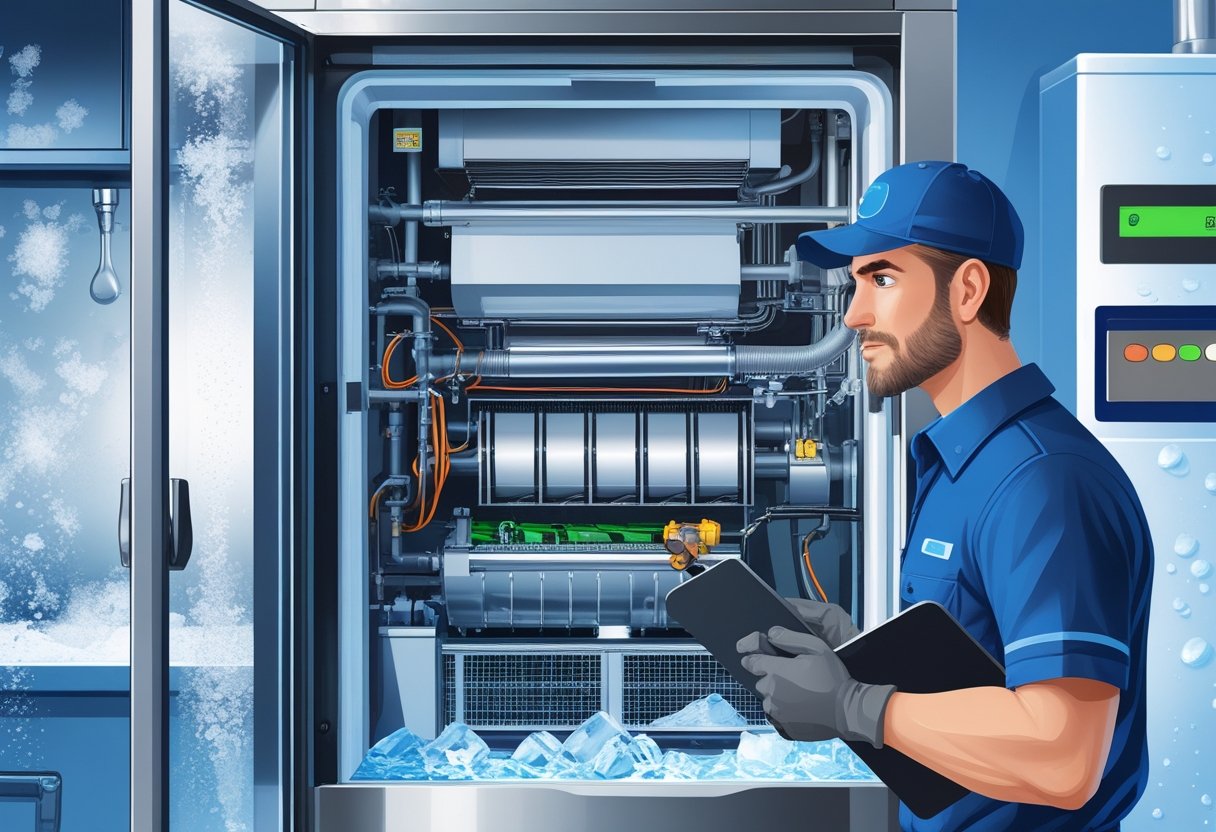
Why Is My Ice Machine Slow Causes and Quick Fixes to Improve Ice Production
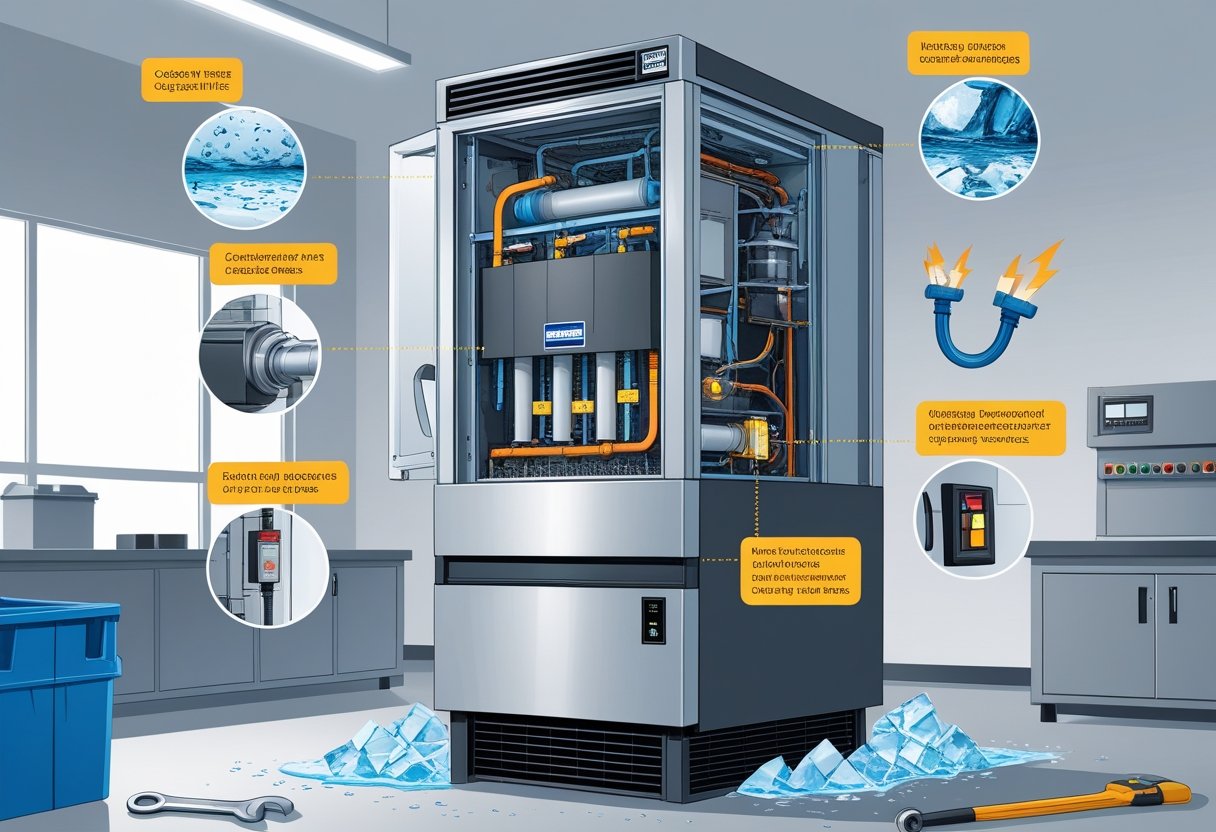
Top Reasons Ice Machines Fail and How to Prevent Costly Breakdowns

Common Ice Machine Rental Questions Answered for Event and Business Needs

How to Choose a Commercial Ice Machine for Optimal Efficiency and Reliability
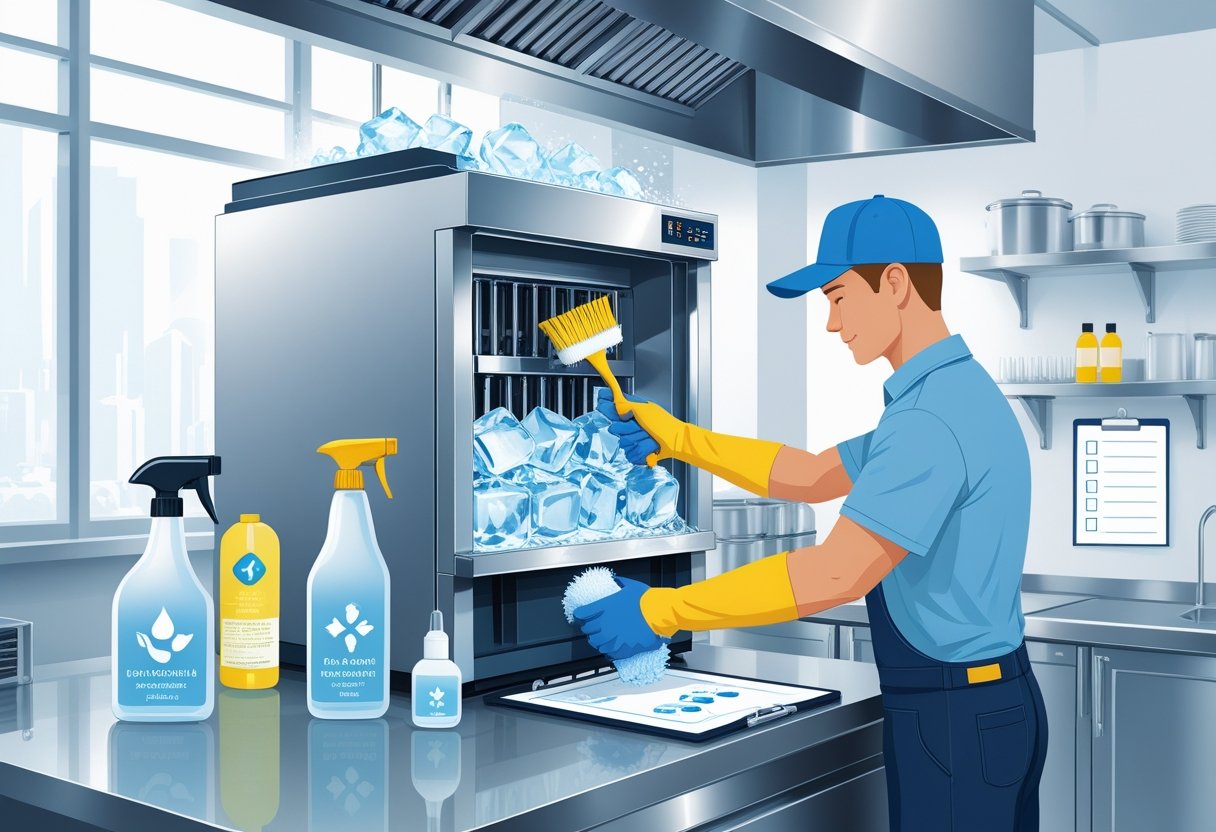
Importance of Routine Ice Machine Cleaning for Health and Efficiency Maintenance
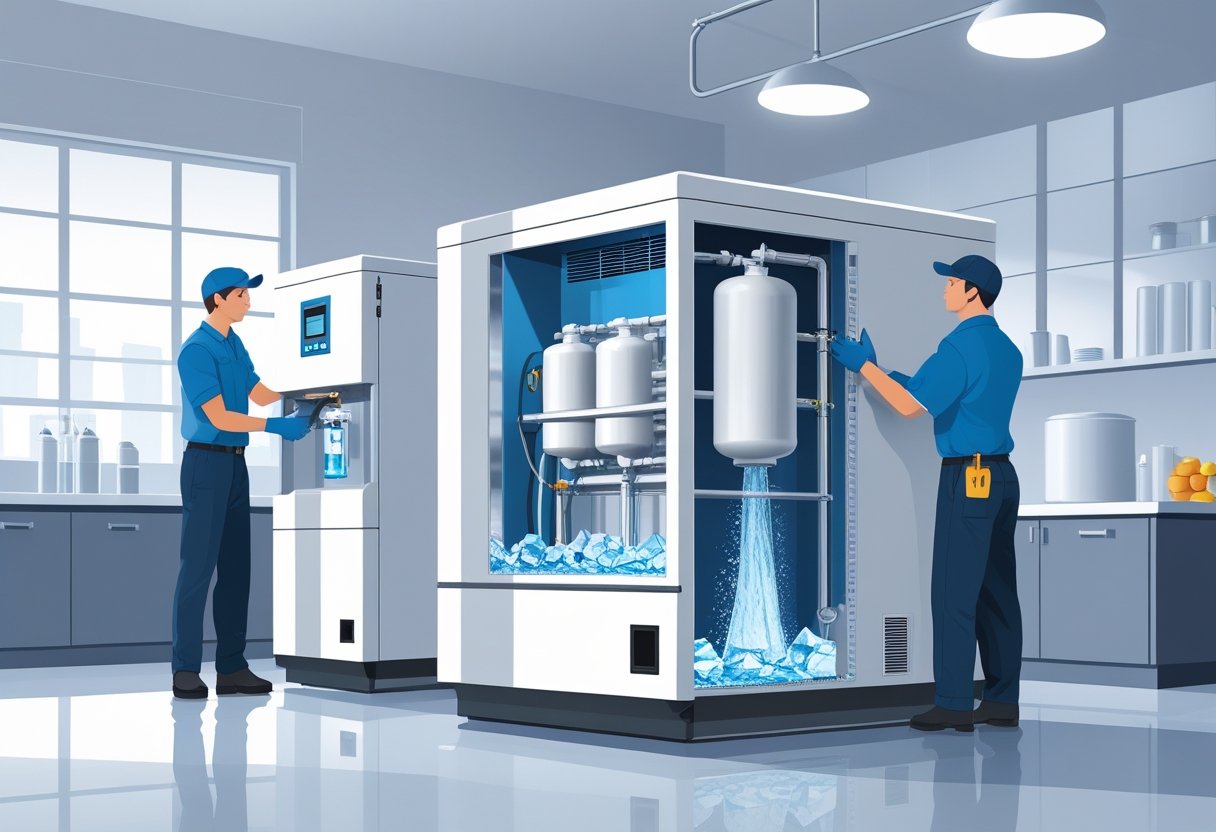
Do Ice Machines Need Water Filters for Optimal Performance and Longevity
